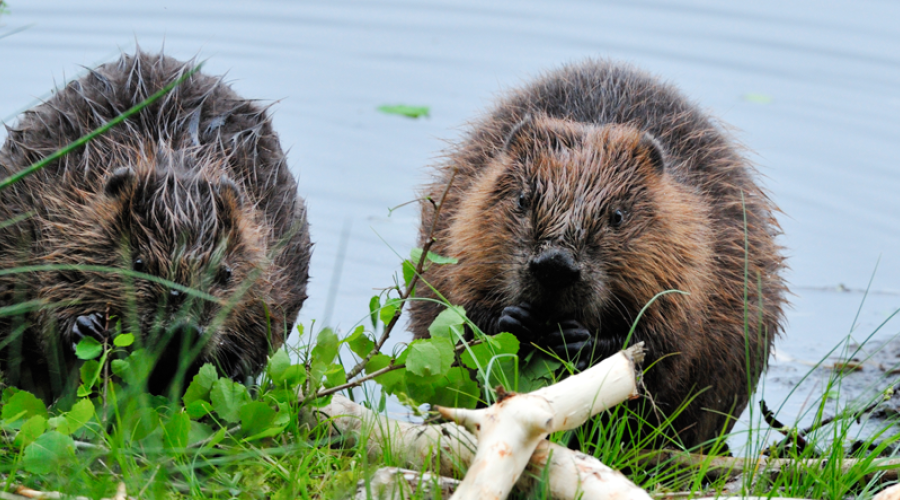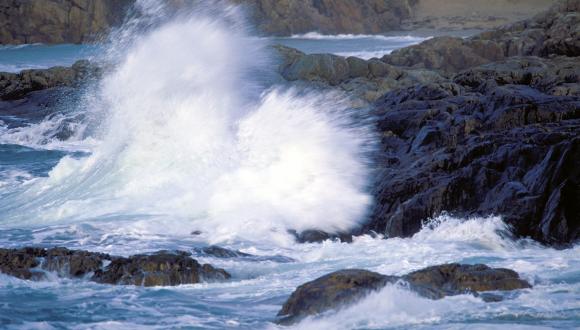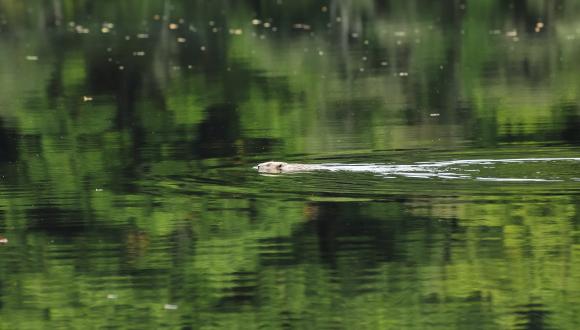
Conservation success as beaver numbers double in Scotland
10 August 2021
The number of beavers has more than doubled in Scotland in the last three years to around 1000 animals, according to a NatureScot survey published today.
The new population survey has not only found that beaver numbers have increased, but that the population is in a rapid expansion phase as beavers spread out from Tayside, with territory numbers also more than doubling to 251. That population now ranges from Glen Isla to Dundee and Stirling, Forfar to Crianlarich, and is likely to expand into Loch Lomond in the future.
Robbie Kernahan, Director of Sustainable Growth, said:
“Wildlife is declining in Scotland so this extensive survey which reveals an increasing beaver population is great news for nature in Scotland. Beavers play a vital role in creating and restoring wetlands where other species can thrive, reducing downstream flooding and improving water quality. We also hope that many people in Scotland will enjoy spotting these sometimes elusive but fascinating animals, as they become more common.”
The survey, carried out last winter, is the largest, most comprehensive and authoritative survey of beaver numbers and their range ever conducted in Britain. It gathered detailed and up-to-date information on the locations of active beaver territories, as well as assessing the health and spread of the overall population, to help inform future beaver work.
NatureScot worked with Scotland’s foremost beaver specialist, Roisin Campbell-Palmer, and experts at the University of Exeter to conduct the survey. This is the first survey conducted since beavers gained protected status as European Protected Species in Scotland in 2019 and investigated areas where beaver sightings had been reported but not confirmed.
Dr Alan Puttock, from the University of Exeter, said:
“This survey, the biggest undertaken in Britain, combined extensive field surveys and analysis to map the spatial distribution and territory dynamics of beavers across Tayside and surrounding areas. Developing this methodology in what is currently Britain’s largest wild population helps provide robust and replicable means by which to study beaver populations nationally.”
In the last survey in 2017, approximately 1,300 km of river and loch shore were surveyed. The new survey covered an even larger area, as beavers have been sighted as far afield as Loch Lomond to the west and Fife to the south east. For the 2020-2021 survey, experienced beaver surveyors searched for signs of beavers on foot and by canoe across the area, finding 13,204 confirmed signs such as burrows, dams, lodges, scent mounds, canal digging, and tree and crop feeding.
Dr Roisin Campbell-Palmer, the report lead author, said:
“Beavers are recognised as ecosystem engineers with important biodiversity benefits, though some impacts can be challenging alongside certain land-use practices. This survey will hopefully provide valuable information to land managers and policy makers seeking to maximise the benefits and minimise the conflicts associated with the return of beavers to our rivers.”
The 2020 Beaver Management Report was also published today. It outlines the range of practical mitigation measures undertaken by NatureScot and land managers last year to reduce the negative impacts of beaver activity, such as burrowing and dam building on agricultural land. It reveals that 68 active mitigation projects (such as tree protection and installing flow devices in beaver dams) were progressed. To prevent serious damage to agriculture, under species control licences reported to NatureScot, 31 beavers were trapped and moved to licensed, enclosed reintroduction projects in England, 56 beaver dams were removed, and 115 beavers lethally controlled.
These numbers are consistent with 2019, when over nine months, 15 beavers were trapped and moved to Knapdale or trial reintroduction projects in England, and 87 beavers were shot by trained and accredited controllers. This covered the period from 1 May 2019, when beavers were granted European Protected Species (EPS) status by the Scottish Government, to the end of 2019.
Since EPS protection, lethal control is now regulated by licence, ensuring that the beaver population continues to grow and expand, while allowing impacts to be managed on particularly susceptible and important agricultural land. Most beavers benefit nature and cause no issues with landowners. However, in small number of cases, particularly on agricultural land, there can be negative impacts.
Robbie added:
“Beavers are nature’s supreme water engineers, but we know they may cause severe problems in some areas, particularly for crops on prime agricultural land and for important infrastructure like road drains or railway lines. This is reflected in the number of cases where mitigation measures were needed, such as fencing and flow devices or dam removal, as well as in the number of beavers which had to be trapped and moved or controlled under licence this past year.”
Over the last two years since beavers became a protected species, a team of NatureScot staff, aided by a specialist advisor, has given advice, support and on-the-ground assistance to land managers to install mitigation where beavers have created conflict with land management.
Read the full 2020-21 survey, NatureScot Research Report 1274 - Survey of the Tayside Area Beaver Population 2020-2021
Read the Beaver Management Report for 2020





